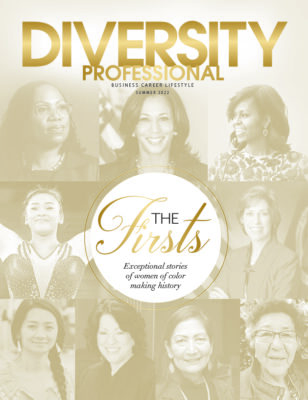Making Real Changes In Supplier Diversity
ARE WE REALLY MAKING CHANGES IN SUPPLIER DIVERSITY?
There is a lot of talk about diversity- in Hollywood (or a lack there of ), in the technology industry and on the fashion runway – but are we having the right conversations about diversity in our business supply base? As we all know, large corporations have enormous purchasing power. This affords them the opportunity to stimulate the local economy, develop a competent workforce and create jobs while also providing direct financial benefits to these organizations.
A corporation might know how diverse their supply base is, but what are they actually doing with that information? Are organizations using that information to gain a competitive advantage? How many corporations can say they are outsourcing parts of their operation that create jobs in distressed communities? Have organizations strengthened the local economy of an inner city and created employment opportunities for minority youth?
A supply base needs to reflect the consumers who are being served, but have organizations defined the impact in the communities that are being served? There seems to be a mismatch between the goals that corporations set and what actually gets measured. That’s where the next level of conversation truly needs to happen.
How much money corporations have spent with diverse suppliers over the course of a year is important information, but it is not enough. What needs to be defined with more metrics and better results is the return on investment for supplier diversity.
Why are key performance indicators (KPIs) not correlated to supplier diversity? Corporate America has defined those KPIs for almost all other goals within their organizations. This valuable data can tell what is happening within a supply base, such as the trends and potential obstacles to help predict environments for 2017 and beyond.
Some conversations have begun around this topic. The Billion Dollar Roundtable, an organization that advocates and recognizes corporate supply chain spending of at least $1 billion with minority and woman-owned suppliers, is discussing the economic impact that supplier diversity achieves. This is the start of what supplier diversity professionals need to show stakeholders and executives –the impact and cost-effectiveness that diverse suppliers provide in business.
Focusing on spending alone is a narrow approach to what supplier diversity means to the overall strategy for an organization. Supporters see it as a “nice thing to do,” which translates to not being effective. Adopting a balanced approach to measuring supplier diversity requires weighing multiple goals. For example, corporations should account for supplier sales growth, footprint growth, and gross and net profit measurements When we can assess the impact on economic and societal challenges that supplier diversity achieves, then we are making progress.
Let’s use corporate purchasing power to make a difference, but also show real-time, attainable results. Supplier diversity needs to show that the sourcing process strengthens the community from which corporations draw its workforce and creates brand loyalty among an increasingly important demographic.
When we hold people accountable for different results, change happens. By adopting new practices and procedures to define and improve the measurement of supplier diversity, we will have a greater impact that will help diverse suppliers succeed.









